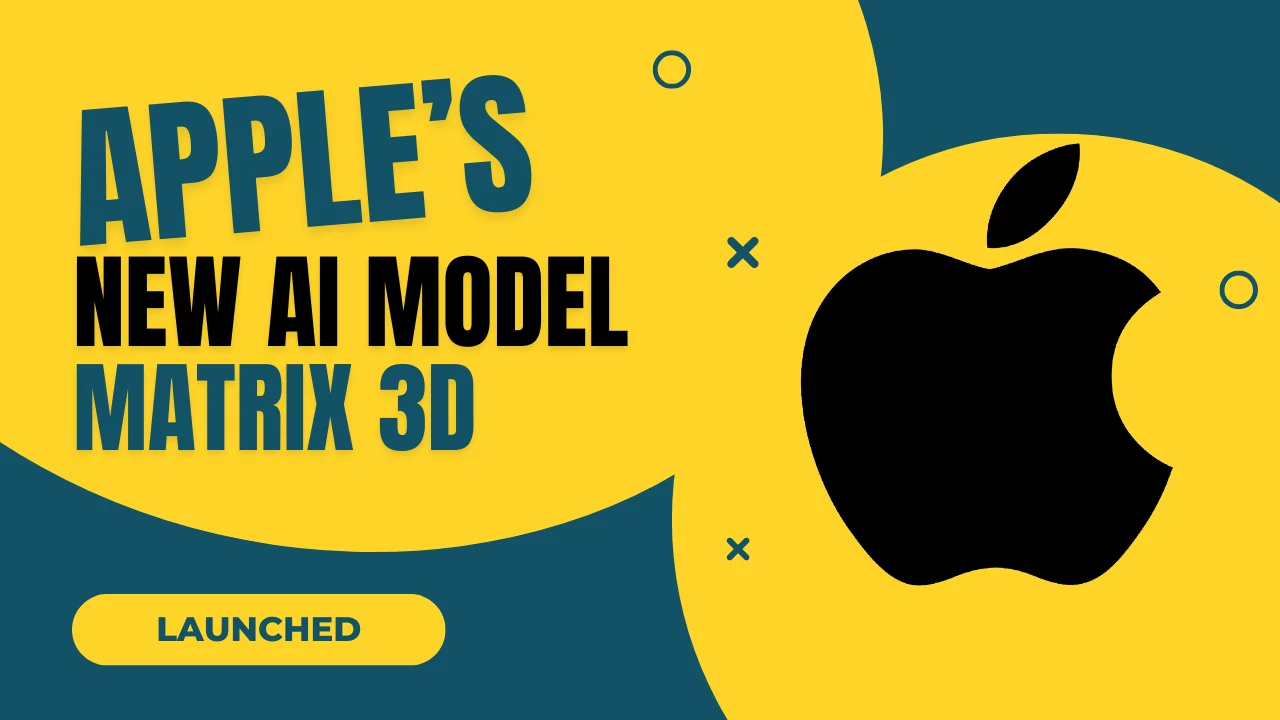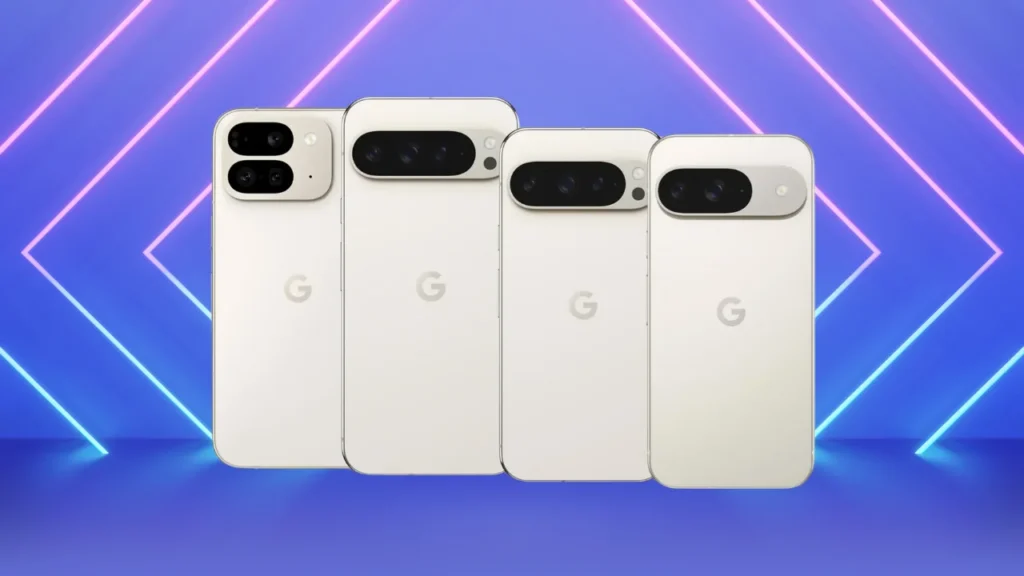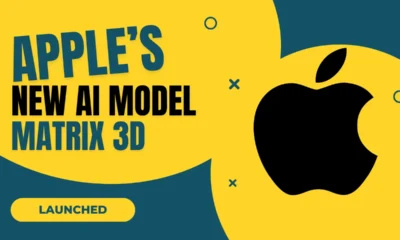Tech
Whatsapp New Feature, Users can now mute spam calls

WhatsApp, the popular instant messaging app, is currently working on a whatsapp new feature and also highly-anticipated feature that will allow users to mute calls from unknown numbers. The new toggle is set to be located within the app settings, providing users with the ability to silence calls from unknown numbers at all times. The feature is still under development, but it is set to be included in a future update of the app.
According to WABetainfo, calls from unknown numbers will be shown in the calls list and notification centre, but they will be silenced once the feature is enabled. This new feature is a welcome addition to WhatsApp’s existing spam call management options, which include the ability to block and report spam callers. The new mute feature is expected to significantly reduce the number of unwanted calls received by users, helping them to manage their time and maintain their privacy.

Whatsapp new feature and spam calls
Spam calls have become an increasing problem in recent years, with scammers and their unsolicited calls causing frustration for users around the world. This new feature is a response to this growing issue and is part of WhatsApp’s ongoing efforts to provide users with more control over their messaging experience. With the ability to silence unknown callers, users will be able to avoid spam calls and unwanted interruptions. That will allow them to stay focused and productive throughout their day.
WhatsApp has always been committed to providing users with a secure and user-friendly messaging experience. And this new feature is just the latest example of this commitment. With over two billion active users worldwide, the company is constantly working to improve its features and services, and the new mute feature is a testament to this ongoing effort.
Not sure about Whatsapp But Elon Musk is diving his head into Artificial Intelligence
In addition to the new mute feature, WhatsApp has also recently introduced a range of other new features designed to enhance the user experience. For example, the app now includes the ability to share high-quality images and videos, along with improved messaging options. Such as the ability to quickly reply to messages and send voice notes. These new features have been well-received by users, and they demonstrate WhatsApp’s continued dedication to innovation and improvement.
Whatsapp is improving it’s services
As the company continues to develop new features and services, it remains one of the most popular messaging apps in the world. With its easy-to-use interface, reliable service, and commitment to user privacy and security, WhatsApp is a valuable tool for people all over the globe. Whether you’re looking to stay in touch with friends and family, connect with colleagues, or simply stay up-to-date with the latest news and trends, WhatsApp has everything you need to stay connected.
In conclusion, the new mute feature is an exciting addition to WhatsApp’s already-impressive lineup of features and services. With the ability to silence unknown callers, users will be able to avoid spam calls and unwanted interruptions, allowing them to stay focused and productive throughout their day. As WhatsApp continues to evolve and improve, it remains one of the most popular and reliable messaging apps in the world, and its commitment to innovation and user satisfaction is sure to keep it at the forefront of the messaging landscape for years to come.
Tech
GPT-5 Launched: Revolutionary Features That Make Chat GPT 5 the Most Advanced AI Model Yet

Introduction to GPT 5:A New Era of AI Starts Now
OpenAI has officially released GPT-5, and it’s not just an upgrade; it’s a step forward in the future of AI. GPT-5 was made to combine never-before-seen capability with unrivaled flexibility. Its goal is to change the way people engage with AI.
This paradigm gives developers, researchers, marketers, and regular users a better, faster, and more dependable experience than anything else.
In this article, we’ll talk about the main characteristics, unique skills, and reasons why GPT-5 is already being called the most powerful AI model in the world.
One AI System—No More Switching Models
The smart routing system is one of the most groundbreaking new features in GPT-5.
In the past, consumers had to choose between multiple models for certain activities, including fast, big, or cheap. Now, GPT-5 automatically picks the best version for your question: Deep Reasoning Mode turns on when you need to solve a complex problem in more than one stage. Speed Mode: Uses lighter versions for jobs that are quick and easy. Efficiency Mode: This mode balances performance and resource use without lowering quality. With this unified architecture, you always receive the best results, whether you’re looking for brief data or making complicated applications.
PhD-Level Intelligence with 45% Fewer Mistakes
OpenAI says that GPT-5 goes from being “high-schooler” smart (GPT-3) to being a PhD-level expert.
It’s not only smarter; it’s also a lot more accurate: There are 45% fewer factual mistakes than in GPT-4o. Better at knowing itself—knows when it doesn’t know the answer. Better logical reasoning for use in school, research, and work. This means that GPT-5 is a much more reliable partner for important tasks like making decisions with a lot at risk, doing scientific research, and developing commercial plans.
GPT 5 is Your own AI coder and creative partner
For developers and designers, GPT-5 is a total game-changer: One-Prompt App Creation: You can make whole websites, apps, and even games using only one descriptive prompt. Aesthetic-Aware Design makes layouts and user interfaces that not only work, but also look good. Advanced Debugging lets you easily navigate huge codebases and fix hard bugs. Writers, marketers, and content creators may also use GPT-5 to brainstorm, write, and improve content in a way that is similar to how humans do it. This makes it a real creative partner.
Integration of all tools into one
Everything you need is in one spot with GPT 5. It combines all of OpenAI’s features into one smooth interface, so you don’t have to switch tabs or modes anymore: Web browsing in real time for data. DALL-E 3 makes images for creative purposes. Voice Interaction for talking like a real person. Collaborative Canvas lets you brainstorm and develop together in real time. This unified method saves time and makes it easy to mix text, graphics, and interactive elements in unique ways.
Personalization Like Never Before
GPT-5 doesn’t just understand what you ask; it also learns about you. You can choose its tone and style by using built-in “personalities”: Cynic: funny and doubtful. Robot: Straightforward and formal. Listener: understanding and communicative. Nerd: full of details and technological stuff. This makes GPT 5 more like a person and lets you change it to fit your needs, making it great for anything from casual conversations to professional advice.
What Makes GPT-5 a Paradigm Shift
GPT-5 is not merely faster or bigger like most model improvements. It is also more human-aligned in a fundamental way: Accuracy and trustworthiness that have never been seen before. Easily adapting to the difficulty of the task. One interface with real multi-modal capability. diverse requirements call for diverse ways of interacting. Everyone can use the latest AI for free, which makes AI technology more accessible.
Final Thoughts: The Future of AI Is Here
GPT-5 is the beginning of a new era in the history of AI. It is the most advanced AI model to date since it can think deeply, reply quickly, make things look beautiful, and change without any problems. As businesses look into what this technology can do, from making software automatically to analyzing data in real time, one thing is for sure: Chat GPT 5 will change the way we work, learn, and make things.
Frequently Asked Questions About GPT-5
1. What is GPT-5?
GPT-5 is OpenAI’s latest and most advanced AI model, designed to deliver higher accuracy, faster responses, and a unified experience by automatically selecting the best model for each task.
2. What makes GPT-5 better than GPT-4?
GPT-5 has 45% fewer factual errors, offers PhD-level reasoning, includes a smart routing system for optimal performance, and integrates all AI tools like web browsing, image generation, and voice interaction into one interface.
3. Can GPT-5 create apps and websites?
Yes. GPT-5 can build complete apps, websites, and even games from a single descriptive prompt, with both functional code and aesthetic design choices.
4. Does GPT-5 have personalization options?
Yes. GPT-5 allows users to choose from preset personalities like Cynic, Robot, Listener, and Nerd, tailoring tone and style to individual preferences.
5. Is GPT 5 available for free?
OpenAI has made GPT 5’s core capabilities available to free users, giving wider access to its powerful reasoning, creation, and research features.
Tech
Apple’s New AI Model Matrix3D: Transforming 2D Photos Into Immersive 3D Worlds
Apple’s groundbreaking AI model, Matrix3D, turns simple 2D images into stunning 3D environments with unmatched precision. Developed in collaboration with top researchers, this open-source innovation could revolutionize AR, gaming, and digital design. Explore its potential today!

Apple has once again pushed the boundaries of innovation with the debut of Matrix3D, a revolutionary AI model designed to convert ordinary 2D images into rich, interactive 3D environments. Developed in partnership with researchers from Nanjing University and the Hong Kong University of Science and Technology, this cutting-edge technology promises to redefine how we approach 3D content creation, photogrammetry, and augmented reality experiences.
What Makes Matrix3D a Game-Changer?
At its core, Matrix3D is a versatile AI powerhouse built to tackle multiple photogrammetric challenges simultaneously. Unlike traditional tools that require specialized hardware or extensive datasets, Apple’s new AI model simplifies the process with three groundbreaking capabilities:
- Precision Pose Estimation
The model intelligently calculates the exact position and orientation of a camera when a photo was taken—critical for mapping objects in 3D space. - Depth Prediction Mastery
By analyzing subtle visual cues, Matrix3D predicts the distance between objects and the camera, creating detailed depth maps that form the backbone of 3D scenes. - Novel View Synthesis Magic
Ever wished to see a scene from a completely new angle? Matrix3D generates realistic alternative perspectives using just a handful of existing images.
The secret sauce lies in its multi-modal diffusion transformer (DiT), which merges diverse data types—images, camera parameters, depth information—into a unified 3D representation. What’s even more impressive? Its masked learning technique allows the model to train effectively on incomplete datasets, bypassing a major hurdle in AI development.
Why Matrix3D Stands Out in AI-Driven 3D Modeling

- Works Wonders With Minimal Input
Forget needing dozens of photos. Matrix3D can reconstruct intricate 3D scenes from just 1-3 images, democratizing high-quality 3D modeling for casual users and professionals alike. - All-in-One Photogrammetry Tool
By combining pose estimation, depth mapping, and view synthesis into a single workflow, Apple’s AI model eliminates the need for multiple specialized tools. - Hollywood-Grade Realism
The model’s ability to interpret lighting, textures, and spatial relationships results in strikingly lifelike 3D environments that mirror real-world physics. - Open-Source Collaboration
In a bold move, Apple has open-sourced Matrix3D’s code and pre-trained models on GitHub, inviting developers and researchers worldwide to build upon its framework.
The Future of iPhones, AR, and Digital Creativity
Though still in the research phase, Matrix3D’s potential applications are staggering. Imagine iPhone users snapping a few photos of their living room and instantly generating a 3D model for AR furniture shopping—or educators creating immersive history lessons from museum exhibit snapshots. For developers, this technology could accelerate workflows in gaming, virtual design, and even 3D printing.
Apple’s commitment to blending AI with creative tools hints at a future where spatial computing becomes as intuitive as taking a selfie. With rivals like Google and Meta investing heavily in 3D AI, Matrix3D positions Apple as a frontrunner in the race to dominate AR/VR ecosystems.
How to Explore Matrix3D Today
Curious to experiment with this technology? Apple has laid out a treasure trove of resources:
- In-Depth Research Paper: Dive into the technical architecture and training methodologies.
- GitHub Repository: Access the full codebase, pre-trained models, and setup guides to kickstart your projects.
Whether you’re a developer aiming to build the next-gen AR app or a digital artist exploring new mediums, Matrix3D offers a playground for innovation.
Final Thoughts: A New Era for Accessible 3D Design
Apple’s Matrix3D isn’t just another AI model—it’s a paradigm shift. By turning everyday photos into dynamic 3D worlds, it lowers barriers to advanced photogrammetry and empowers creators at all skill levels. As this technology evolves, we might soon see it integrated into Apple’s consumer products, making 3D content creation as commonplace as editing a video on your iPhone.
For now, the open-source release sparks endless possibilities. One thing’s certain: the line between physical and digital realms is about to get even blurrier.
Ready to explore the future of 3D AI? Head to Apple’s GitHub repository and join the revolution.
Tech
From Tensor G5 to AI Magic: What’s New in the Google Pixel 10
The smartphone landscape is heating up, and Google Pixel 10 series is poised to make waves. Following the well-received Pixel 9, which narrowed the gap with Apple and Samsung flagships, the Pixel 10 is shaping up to be Google’s most ambitious phone yet. From a groundbreaking chipset to AI-driven innovations, here’s everything we know—plus new insights—about the Pixel 10’s potential to disrupt the premium smartphone market.
1. Tensor G5: Google’s Big Bet on TSMC’s 3nm Power
The most significant leak so far confirms Google is ditching Samsung Foundry for TSMC to manufacture its Tensor G5 chip. Unlike the Tensor G4’s 4nm process, TSMC’s cutting-edge 3nm technology promises 20-30% better efficiency and 15% faster performance, addressing long-standing complaints about overheating and battery drain in earlier Pixels.
Why This Matters:
- Samsung’s Exynos-based Tensor chips often lagged behind rivals in thermal management. TSMC’s track record with Apple’s A-series and Snapdragon chips could finally give Google a competitive edge.
- Leaked benchmarks hint at Tensor G5 matching the Snapdragon 8 Gen 4 in multi-core tasks, a first for Pixel.
- Improved AI accelerators may enable on-device Gemini Ultra capabilities, enabling real-time video processing and smarter Assistant features.
2. Aggressive Pricing: A Direct Challenge to Apple and Samsung
Rumors suggest the Pixel 10 will undercut the iPhone 17 by nearly $120 in key markets. With Apple iPhone 16e already facing criticism for its $699 ‘budget’ tag, Google seems determined to lure premium buyers with flagship specs at mid-range prices.
Strategic Implications:
- Google’s smartphone market share sits at just 4% globally (IDC Q2 2024). Competitive pricing could help it capitalize on Apple/Samsung fatigue.
- Analysts speculate Google might absorb costs to promote its ecosystem (e.g., Pixel + Gemini AI subscriptions).
3. Battery & Cooling: Fixing the Pixel’s Achilles’ Heel
The switch to TSMC’s 3nm process isn’t just about speed. Early prototypes suggest:
- 5,200mAh battery for the Pixel 10 Pro XL (up from 4,600mAh in Pixel 9 Pro XL).
- Graphene-based cooling systems to prevent thermal throttling during prolonged AI tasks.
- “All-day” battery life targets, even with always-on AI features like Gemini-powered ambient sensing.
4. Design: Balancing Ergonomics and Aesthetics
The Pixel 9’s flat-edge design polarized users. For the Pixel 10, Google is reportedly testing:
- A slightly curved aluminum frame for better grip.
- Thinner bezels (1.2mm, down from 1.5mm) and a 6.3-inch Pro model with a 120Hz LTPO AMOLED display.
- A matte-textured back panel inspired by the Pixel Fold, paired with brighter, customizable “Gemini Glow” accent colors.
5. Cameras: AI Over Hardware? Not So Fast
While leaks emphasize AI upgrades, hardware isn’t being ignored:
- New sensor details: A 1/1.12-inch 50MP main sensor (up from 1/1.31-inch) for better low-light shots.
- AI editing suite: “Studio” mode for video (background noise removal, auto-framing) and “Perfect Group Shot” to merge faces from multiple photos.
- Pro-level video: 4K/120fps recording and Cinematic Lookout (AI-generated bokeh adjustments).
Pixel 10 Series Lineup: Four Models, One Foldable

Google is expanding its roster to include:
- Pixel 10 (6.1-inch)
- Pixel 10 Pro (6.3-inch)
- Pixel 10 Pro XL (6.8-inch)
- Pixel 10 Pro Fold (7.6-inch inner display)
The Pro Fold is the wildcard, rumored to feature a self-healing crease and a redesigned hinge. With Samsung dominating foldables, Google’s entry could push app optimization for Android’s foldable ecosystem.
Launch Timeline: Why Google Is Waiting
A delayed October 2025 launch (vs. the Pixel 9’s August debut) suggests Google is prioritizing Tensor G5 refinement. This aligns with TSMC’s 3nm production schedule, which is also supplying Apple’s A19 chips.
The Bottom Line: Can Pixel 10 Compete?
Google is doubling down on AI, affordability, and hardware polish. If leaks hold, the Pixel 10 could rival the iPhone 17 and Galaxy S25 in performance while undercutting them on price. However, challenges remain:
- Carrier partnerships: Limited carrier support in the U.S. has hindered Pixel sales.
- Global availability: Pixels still aren’t sold in key markets like India’s offline stores.
With Samsung and Apple investing heavily in generative AI, Google’s early-mover advantage in on-device AI could fade by 2025. But for now, the Pixel 10 looks like Google’s strongest bid yet for a seat at the premium table.
(Sources: 9to5Google, Android Authority, and industry analyst Ming-Chi Kuo.)
















